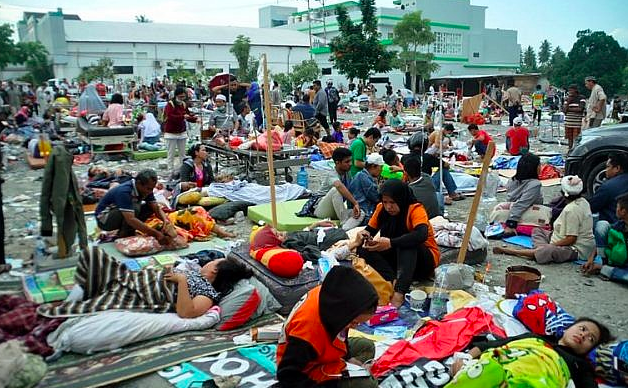Indonesia Engulfed by Massive Tsunami, Killing Nearly 2,000
Tsunami in Palu destroys the island and takes the lives of 2,000 people.
On September 28th, Palu, Indonesia was hit by an earthquake with a magnitude of 7.5 on the Richter scale. Following the earthquake, a devastating tsunami took over, and survivors are currently struggling with a lack of electricity and running water. There have been reports of nearly 2,000 killed and 5,000 missing since the disaster.
The horizontal earthquake was a shock to the residents of Sulawesi Island and to scientists. According to The Guardian, horizontal earthquakes, also known as strike-slip faults, usually cause very weak tsunamis. Scientists are still unsure what caused this earthquake, but it is suggested that the earthquake might have brought a landslide that could have shifted the water. The speed of the tsunami and the shape of the island could also have been important factors in the destruction—the tsunami hit the island 30 minutes after the earthquake and was moving at a speed of 500 miles per hour. The Palu Bay is deep and narrow and could have intensified the force of the waves by concentrating the energy of the tsunami at the tip of the island. Dr. Kerry Seigh, a scientist at the Earth Observatory of Singapore, explained to The Guardian, “It’s well known that the fault in Palu has been storing strain and accumulating strain at a few centimeters per year, so it’s been a very rapidly slipping fault for years.”
The lack of a modern warning system in Indonesia could have also contributed to the extreme destruction of the impoverished island. According to The New York Times, Indonesia’s warning system, created in 2008, consists of seismographic sensors, buoys, tidal gauges, and GPS. This equipment thoroughly failed to predict the magnitude of the tsunami. The 20-foot tsunami that hit Palu tore apart bridges, destroyed homes, and killed 1,948 people, with the death toll still rising two weeks after the disaster. According to Forbes, the system did not take into account the narrow bay’s effects on the propagating water. The warning system underestimated the heights of the waves. There are some suggestions that BMKG, Indonesia’s meteorological and geophysics agency, could have removed the warning before the waves hit the island. It is also suggested that the buoys which were supposed to detect the tsunami and earthquake were faulty because they had not been in service for six years. Phil Cummins, a professor at Australian National University, says that the reason so many people died is that they didn’t know they should have looked for higher ground after the earthquake. He says that they should have used the earthquake as a warning that there would be incoming danger.
Following the week of the tsunami, three volcanoes triggered by the earthquake erupted: Mount Soputan in North Sulawesi, the Son of Krakatoa in Java, and Mount Soputan. Toxic fumes from their ashes covered the already destroyed island.
Currently, there are rescue teams in Palu that are making critical efforts to find the missing and save the injured. Local shop owners have no choice but to distribute their food for free to the citizens. With supplies running low, there have been incidents of fighting over the limited essentials; officers have even had to threaten survivors who have tried to break into shops.
The Indonesian tsunami should serve as a warning for the island nation to improve its protocols for natural disasters. Such a devastating tragedy cannot be allowed to occur again.

Priscilla Song (‘20), Managing Editor, enjoys writing and reading. In her free time, she also likes to spend time with her family and participate in...












































































































































